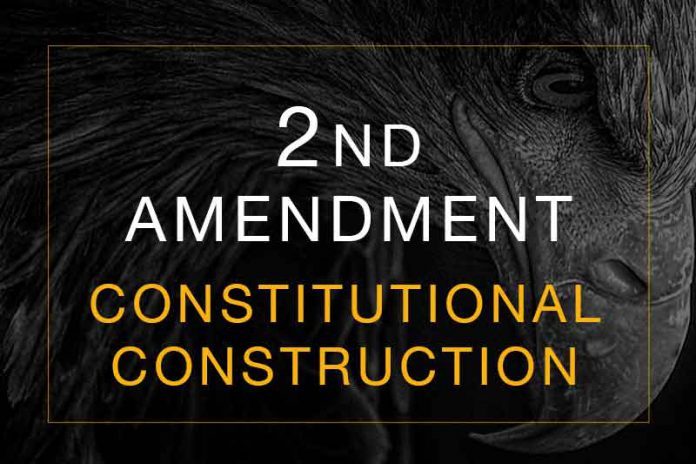Last Updated on January 16, 2023 by Constitutional Militia
2nd Amendment
Proper Constitutional Construction
The Founders provided ready and effective means within the Constitution whereby WE THE PEOPLE themselves could repel invaders, put down domestic insurrectionists, and enforce the laws against criminals, from foreign “terrorists” to home-grown usurpers and aspiring tyrants—all while maintaining “the forms [of government] to which they are accustomed”.[1] Those means are “the Militia of the several States”.
Second Amendment: Proper Constitutional Construction
As with any other statute, the Constitution must be read as an entirety, consistently interrelating all of its provisions.[2] For all parts of the same law “must be read in relation to each other”,[3] and “reconciled so as to produce a symmetrical whole”.[4] All other things being equal, “identical words used in different parts of the same act are intended to have the same meaning”.[5] So “[w]hen the same term which has been used” in one clause of the Constitution is used in another, “it must be understood as retaining the sense originally given to it”.[6] The selfsame mode of construction applies to the Second Amendment.
Therefore, when the Constitution first empowers Congress “[t]o provide for organizing, arming, and disciplining, the Militia, and for governing such Part of them as may be employed in the Service of the United States”,[7] “the Militia” and “them” must refer to “the Militia” in the Constitution’s next relevant clause: namely, “the Militia of the several States”, of which Militia the President “shall be Commander in Chief * * * when [they are] called into the actual Service of the United States”.[8] And these “Militia of the several States” must be the very same “well regulated Militia * * * necessary to the security of a free State” of which the Second Amendment then speaks, if only because each and every State in the Union—that is, “the several States”, as the Constitution always describes them collectively[9]—must be taken to be “a free State” within the Amendment’s understanding of that term. So, “the Militia of the several States” that Congress is empowered “[t]o provide for organizing, arming, and disciplining” must also be understood as consisting of “the people” as a whole in each of those States. Furthermore, “the people” with respect to whom the Second Amendment commands that “the right * * * to keep and bear Arms, shall not be infringed” must be the largely selfsame “WE THE PEOPLE” who “do ordain and establish this Constitution for the United States of America”.[10] For nothing in the Constitution or any of its Amendments identifies any other “people” as entitled to any rights, powers, privileges, or immunities.[11] And the “Arms” to which “the right of the people” pertains must be the “Arms” necessary for them to serve in “well regulated Militia”, which must be the very same “Arms” (at least in the general terms of purpose, type, and quality) with which Congress is “[t]o provide for * * * arming * * * the Militia”.
As a result, the noun “Arms” in the Second Amendment must be construed in the selfsame sense as the verb “arming” in the power of Congress “[t]o provide” therefore—which is the functional sense all references to firearms, ammunition, and accoutrements had in the pre-constitutional Militia statutes: namely, the “Arms” necessary and proper for “the people” to possess in order to provide themselves with “the security of a free State” through “[a] well regulated Militia” under the particular technological circumstances of the period in question. Thus, the proper inquiry where the Second Amendment (or any other constitutional provision relevant to the Militia) is concerned is whether the firearm in question “at this time has some reasonable relationship to the preservation or efficiency of a well regulated militia”.[12]
Today, then, such “Arms” should embrace at least every form of long gun and hand gun that might adequately serve an infantryman, irregular, partisan, guerrillero, or résistant of the present era, including the ubiquitous semiautomatic (or even burst-fire) rifle in a typical military caliber, equipped with a detachable magazine, pistol grip, flash suppressor, and bayonet lug, which contemporary manufacturers supply in numerous varieties and in great numbers to the private market, and which in one form or another are “now manufactured or otherwise provided for the use of the Regular Army”.[13] For further analysis, see Arms and the 2nd Amendment.





























